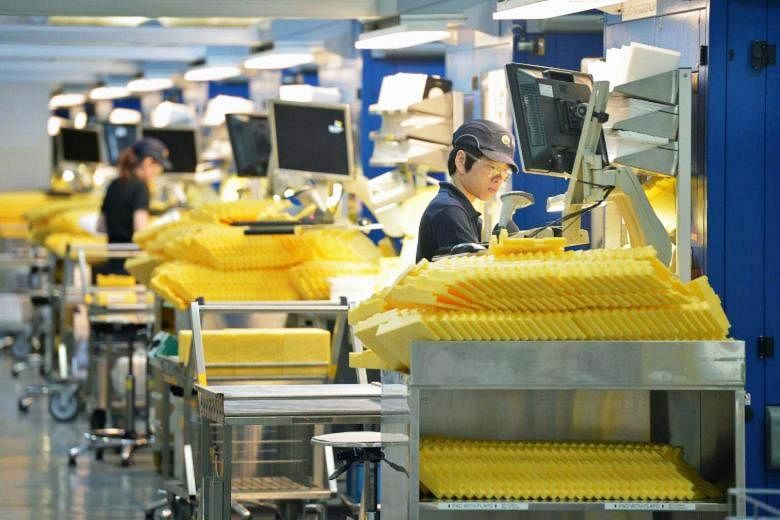Plans by the Government to reopen the economy in a phased manner from June 2 are the only way to go.
But even then, this will be subject to various risks and uncertainties, including issues of coordination and logistics, as well as behavioural responses.
And even after the economy is almost fully reopened, it will remain weak, with many sectors disrupted, some permanently, and companies' business models upended.
The timing to start the process seems about right.
Although infections in worker dormitories remain high but have stabilised, the community spread of Covid-19 has been brought under control - although in the artificial setting of a near-lockdown induced by a circuit breaker, which has been in force for more than six weeks.
Prolonging the circuit breaker, while minimising the risk of infections, will mean more damage to the economy, which then entails other risks, such as more company closures, higher unemployment, family distress and different types of health risks such as depression arising from social isolation and aggravated chronic conditions.
The phases for opening the economy have been carefully chosen. In phase one, the sectors that will reopen - which include manufacturing, production, finance, and insurance and business services - meet two important conditions that justify giving them priority.
First, they are particularly important for the economy, collectively accounting for almost half of Singapore's gross domestic product. Second, they are relatively "low contact" in that they involve fewer customer-facing activities.
Moreover, some of them, such as parts of financial services, insurance and business services can be effectively delivered remotely, as they have been during the circuit breaker period.
Reopening manufacturing will be more complicated. Safe distancing provisions will have to be put in place in factories, which may entail more shift work as well as a reorganisation of production processes.
Manufacturing also relies on supply chains, which can raise problems of coordination. So, for example, if a factory opens but some of its key suppliers remain closed - particularly suppliers overseas - that factory will not be able to produce at full capacity or even produce at all.
It will need to coordinate with the rest of its supply chain to ensure that it can get the essential inputs that it needs to resume normal operations. It may also face logistical problems and higher transportation costs following massive cuts in air and sea cargo capacity in the wake of the Covid-19 crisis.
In the second phase of reopening, which may come after a few weeks, if all goes well, schools, as well as relatively "high-touch" customer-facing establishments such as retail stores, food and beverage outlets, gyms and tuition centres could be permitted to reopen. But even with safeguards, their ability to attract business will be uncertain.
This would depend on how confident customers will be to, for instance, visit retail outlets, dine in at restaurants or work out at gyms - sharing equipment with others.
The chances are that this confidence-building will be a slow process.
Meanwhile, the viability of some establishments could become an issue.
For example, if a restaurant has to adopt safe distancing norms by maintaining a minimum space between tables, it might be able to operate only at a fraction of its normal capacity - maybe 30 per cent, taking into account the possibility that many of its customers may choose to stay away anyway. It will need to determine whether it can earn enough revenue to cover its costs.
Low-margin operators may find it hard to survive and may choose not to reopen, even though they are allowed to.
In any event, it is likely that such "high-touch" businesses will need to continue receiving government support even after they are allowed to reopen.
The third phase, described as the "new normal", will get under way until a vaccine is available and deployed - which is unlikely to be before the end of next year.
An effective vaccine will be a game changer and a major boost to public confidence. It will enable a relatively smooth transition to the new normal in which social, religious and business gatherings can resume and services such as spas, cinemas, pubs and nightclubs - which involve prolonged contact among large crowds - could also reopen.
That, however, is a distant prospect. The more immediate challenge is to get past phases one and two. There will be risks.
As we have seen with other cases of attempted reopenings, for example, in parts of China, Iran, the United States and even South Korea - hailed as among the most successful countries in tackling the outbreak - there have been spikes in infections following reopenings, some of which, in retrospect, were judged to be premature.
Such spikes would dampen public confidence and delay the transition between phases. They might also require the reimposition of restrictions, if not the circuit breaker itself.
The reopening will not be like turning on all the lights in the economy. Rather, it will be like a dimmer switch being turned up slowly and tentatively, first in one part of the economy, then in another, and if that works out well, yet another.
It will not be until 2022 that the whole economy can fully light up again, if we are lucky.












